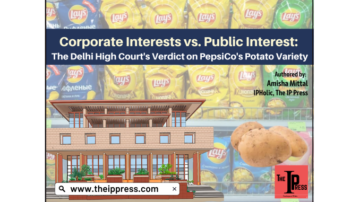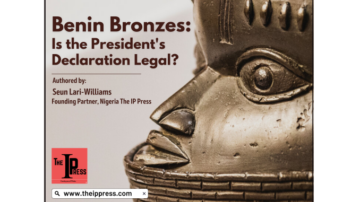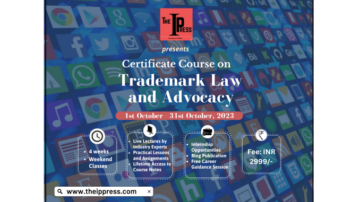

Case Citation: MANU/DE/5461/2023
Introduction:
In the High Court of Delhi, the case of Dolphin Mart Private Limited vs. Avenue Supermarts Limited and Ors. involves a dispute related to intellectual property rights. The case revolves around trademark infringement and raises crucial questions regarding the use of trademarks in the retail industry. This analysis will delve into the procedural history, the key issues presented, the relevant rules of law, and the contentions of both the plaintiff and the defendants.
Procedural History:
The case has progressed through various stages, including applications filed by both the plaintiff and the defendants. Notably, the defendants filed an application under Order XI Rule 1(10) of the Code of Civil Procedure (CPC) to introduce additional documents into the case. The documents sought to be introduced included trademark registration certificates and an Annual Report for the Financial Year 2021.
The plaintiff also filed an application under Order XXXIX Rules 1 and 2 CPC, seeking interim relief to restrict the defendants’ use of specific trademarks registered by the plaintiff.
Issues Presented:
The main issues presented in this case include:
- Whether the defendants’ use of the trademark “DMART” infringes upon the plaintiff’s registered trademarks, particularly those in Classes 14, 21, and 25?
- Can the plaintiff claim proprietary rights over the word “d’mart” and variants thereof?
- Does the plaintiff’s delay in filing the lawsuit and its prior knowledge of the defendants’ use of the trademarks affect the maintainability of the suit?
- Are the defendants’ trademark registrations valid, and can they be used as a defense against infringement claims?
Rules of Law:
The case is governed by several legal provisions and rules, including:
- Code of Civil Procedure, 1908 (CPC) – Order XI Rule 1(10)
- Code of Civil Procedure, 1908 (CPC) – Order XXXIX Rules 1 and 2
- Trade Marks Act, 1999 – Section 11, Section 124, Section 16, Section 17, Section 21, Section 25, Section 28(1), Section 28(3), Section 29, Section 29(1), Section 29(2), Section 29(3), Section 29(5), Section 30(2), Section 31, Section 33
- Section 17 of the 1999 Act – Pertaining to composite marks
- Section 28(3) of the 1999 Act – Relating to registration as a defense
- Section 124 of the 1999 Act – Procedure for rectification of the register
Contentions of the Plaintiff:
The plaintiff, Dolphin Mart Private Limited, has argued the following points:
- It holds statutory rights over its registered trademarks, including those in Classes 14, 21, and 25.
- The defendants’ use of the trademark “DMART” infringes upon the plaintiff’s registered trademarks, leading to confusion among the public.
- The delay in filing the lawsuit is justified, as the plaintiff’s trademarks are registered, and it became aware of the defendants’ use of similar trademarks only in 2017.
- The plaintiff seeks interim relief to restrict the defendants from using the impugned trademarks.
Contentions of the Defendants:
Avenue Supermarts Limited and the other defendants in the case have raised the following arguments:
- The plaintiff cannot claim proprietary rights over the word “d’mart” without a separate registration, as per Section 17 of the Trade Marks Act.
- The plaintiff waited for years to file the lawsuit, indicating acquiescence and delay that bar the suit.
- The defendants have valid trademark registrations, which can be used as a defense against infringement claims.
- The plaintiff has not established a prima facie case of passing off, as there is no likelihood of confusion between the parties’ marks.
ANALYSIS AND FINDINGS:
Defendant’s Objection to Trademark Registration:
Defendant No.1 initially challenged the maintainability of the suit by arguing that Plaintiff’s trademarks were unenforceable because their registrations had lapsed. The Plaintiff countered this objection by asserting that the registrations had been renewed, and thus, the suit remained maintainable. This dispute centers on Section 25 of the 1999 Act, which deals with the renewal, removal, and restoration of trademark registrations. It stipulates that upon renewal, registrations take effect from the date of expiry of the earlier registrations. Therefore, the objection to the suit’s maintainability based on registration lapses does not appear prima facie valid.
Defendant’s Trademark Registrations:
During the course of the lawsuit, the Defendants obtained trademark registrations in Classes 14 and 21. However, their registration in Class 25 faced opposition from the Plaintiff. Consequently, as of the present moment, the Defendants hold proprietary rights over their trademarks in Classes 14 and 21 only.
Infringement Analysis – Class 25:
The crux of the infringement claim revolves around the Defendants’ trademark in Class 25. To establish infringement under Section 29(2) of the 1999 Act, the Plaintiff must demonstrate similarity or identity between the rival marks, similarity or identity of goods, and the likelihood of confusion or association among the public. The first step is to assess if the rival trademarks are identical or deceptively similar.
Anti-Dissection Rule:
The case law M/s. South India Beverages Pvt. Ltd. v. General Mills Marketing Inc. & Anr[1]. underscores the importance of the anti-dissection rule, which emphasizes that composite trademarks should be compared as a whole rather than dissected into individual elements. The rationale behind this rule is that the commercial impression of a trademark on an average buyer is created by the mark as a whole, not its individual components. Therefore, it is impermissible to focus on specific portions or elements of a composite mark to determine deceptive similarity.
Composite Mark Comparison:
In applying the anti-dissection rule, it becomes evident that both Plaintiff’s and Defendants’ trademarks are composite marks. Prima facie, the word ‘d mart’ cannot be dissected from the rest of the mark as a separate entity. Instead, the marks must be considered as a whole. While the word ‘d mart’ may be common to both, the overall composition, style, and design differ significantly between the marks.
Dominant Part Test:
Even if the ‘dominant part’ test were to be applied, the Plaintiff’s claim would not succeed. The dominant features of a mark attract attention and are essential for identification. In this case, the alphabet ‘d’ appears to be the most distinctive element, but it cannot be afforded protection. Furthermore, the word ‘mart’ is generic and common to trade, making it difficult to assert exclusivity. Plaintiff’s own actions, such as applying for a composite mark instead of a standalone ‘d mart’ mark, indicate a recognition of this fact. Consequently, it is challenging to argue that ‘mart’ or ‘d mart’ are strong marks entitled to protection.
Conclusion on Class 25 Trademark:
In conclusion, the rival marks in Class 25 are not deceptively similar, which is a prerequisite for trademark infringement under Section 29 of the 1999 Act. As such, there is no likelihood or possibility of confusion among the public, and Plaintiff cannot assert infringement by the Defendants in this category.
Passing Off Claims:
While the Plaintiff cannot claim infringement in Classes 14 and 21 due to the Defendants’ trademark registrations, they may still pursue a claim of passing off. The Supreme Court’s decision in S. Syed Mohideen v. P. Sulochana Bai[2] establishes that the absence of trademark registration does not preclude a passing-off claim. Therefore, the Plaintiff retains the option to pursue this legal remedy for Classes 14 and 21.
HOLDING AND DECISION:
Based on the above analysis, the Court holds that the Plaintiff’s claim of trademark infringement in Class 25 is not maintainable as there is no deceptive similarity between the rival marks. However, the Plaintiff may pursue a claim of passing off for trademarks in Classes 14 and 21.
IMPLICATIONS AND SIGNIFICANCE:
This case underscores the importance of considering trademarks as a whole and not dissecting them into individual elements when assessing deceptive similarity. It clarifies that the anti-dissection rule prevails in trademark infringement cases. Additionally, it highlights the challenges of asserting exclusive rights over generic or descriptive components of a trademark.
CRITIQUE AND COMMENTARY:
While the legal analysis in this case aligns with established principles, one may argue that the Court should consider the actual likelihood of consumer confusion more explicitly in its judgment. A more detailed examination of consumer behavior and perception could further bolster the decision.
CONCLUSION:
In summary, the Court’s decision in the case of Dolphin Mart Private Limited vs. Avenue Supermarts Limited and Others upholds the anti-dissection rule in trademark infringement cases and emphasizes the need to assess trademarks as a whole. It concludes that there is no deceptive similarity between the rival marks in Class 25, rendering the Plaintiff’s infringement claim in that category untenable. However, the Plaintiff retains the option to pursue a passing off claim for trademarks in Classes 14 and 21. This case serves as a reminder of the complexities surrounding trademark disputes and the importance of a holistic analysis of trademarks.
[1] MANU/DE/2574/2014
[2] MANU/SC/0576/2015
- SEO Powered Content & PR Distribution. Get Amplified Today.
- PlatoData.Network Vertical Generative Ai. Empower Yourself. Access Here.
- PlatoAiStream. Web3 Intelligence. Knowledge Amplified. Access Here.
- PlatoESG. Carbon, CleanTech, Energy, Environment, Solar, Waste Management. Access Here.
- PlatoHealth. Biotech and Clinical Trials Intelligence. Access Here.
- Source: https://www.theippress.com/2023/11/19/dolphin-mart-private-limited-vs-avenue-supermarts-limited-and-ors/
- :has
- :is
- :not
- ][p
- 1
- 10
- 11
- 14
- 16
- 17
- 1999
- 2017
- 2021
- 25
- 29
- 31
- a
- above
- Act
- actions
- actual
- Additional
- Additionally
- affect
- afforded
- against
- Aligns
- Alphabet
- also
- among
- an
- analysis
- and
- annual
- appear
- appears
- Application
- applications
- applied
- Applying
- ARE
- argue
- argued
- arguments
- around
- AS
- Asserting
- assess
- Assessing
- Association
- attention
- attract
- Avenue
- average
- aware
- bar
- based
- BE
- became
- because
- becomes
- been
- behavior
- behind
- between
- Beverages
- Blog
- bolster
- both
- but
- BUYER..
- by
- CAN
- cannot
- case
- cases
- Category
- Centers
- certificates
- challenged
- challenges
- challenging
- civil
- claim
- claims
- class
- classes
- code
- Commentary
- commercial
- Common
- compared
- comparison
- complexities
- components
- composition
- concludes
- conclusion
- confusion
- Consequently
- Consider
- considered
- considering
- consumer
- consumer behavior
- could
- course
- Court
- created
- crucial
- crux
- Date
- Deals
- decision
- defendants
- Defense
- delay
- Delhi
- delve
- demonstrate
- Design
- detailed
- Determine
- differ
- difficult
- Dispute
- disputes
- distinctive
- documents
- does
- Dolphin
- dominant
- due
- Earlier
- effect
- element
- elements
- emphasizes
- entitled
- entity
- essential
- establish
- established
- establishes
- Ether (ETH)
- evident
- examination
- Exclusive
- exclusivity
- expiry
- explicitly
- faced
- fact
- Features
- File
- filed
- Filing
- financial
- findings
- First
- Focus
- following
- For
- from
- further
- Furthermore
- General
- General Mills
- goods
- governed
- had
- Have
- High
- highlights
- history
- hold
- holds
- holistic
- However
- HTTPS
- identical
- Identification
- Identity
- if
- importance
- in
- Inc.
- include
- included
- Including
- india
- indicate
- indicating
- individual
- industry
- infringement
- initially
- instead
- intellectual
- intellectual property
- interim
- into
- introduce
- introduced
- involves
- IP
- issues
- IT
- ITS
- justified
- Key
- knowledge
- Law
- lawsuit
- leading
- Legal
- likelihood
- Limited
- Ltd
- Main
- Maintainable
- Making
- mark
- Marketing
- May..
- mills
- moment
- more
- most
- must
- Need
- no
- notably
- obtained
- of
- off
- on
- ONE
- only
- opposition
- Option
- or
- order
- Other
- Others
- over
- overall
- own
- part
- particularly
- Passing
- per
- perception
- pertaining
- plato
- Plato Data Intelligence
- PlatoData
- points
- possibility
- posters
- present
- presented
- press
- principles
- Prior
- private
- procedural
- procedure
- progressed
- property
- Property Rights
- proprietary
- protection
- public
- pursue
- Questions
- raised
- raises
- rather
- rationale
- recognition
- regarding
- registered
- Registration
- related
- relevant
- relief
- remained
- reminder
- removal
- rendering
- renewed
- report
- REST
- restoration
- restrict
- retail
- retail industry
- retains
- revolves
- rights
- Rival
- Rule
- rules
- Section
- seeking
- Seeks
- separate
- serves
- several
- should
- significance
- significantly
- similar
- sought
- South
- specific
- stages
- standalone
- Step
- Still
- strong
- style
- succeed
- such
- Suit
- SUMMARY
- Supreme
- Surrounding
- Take
- test
- than
- that
- The
- their
- Them
- There.
- therefore
- they
- this
- those
- Through
- Thus
- to
- trade
- trademark
- trademarks
- under
- underscores
- upon
- use
- used
- using
- valid
- various
- vs
- were
- when
- which
- while
- whole
- will
- with
- without
- Word
- would
- xi
- year
- years
- zephyrnet











